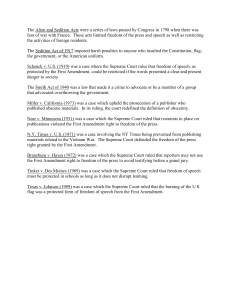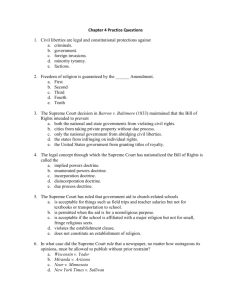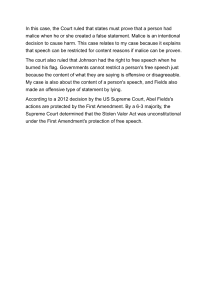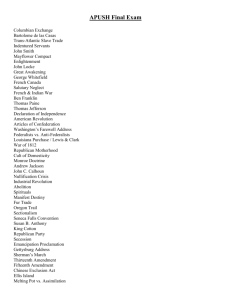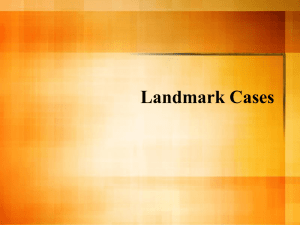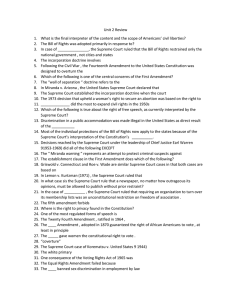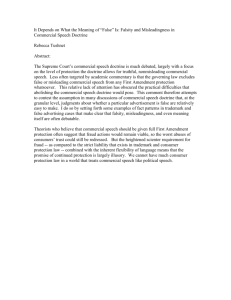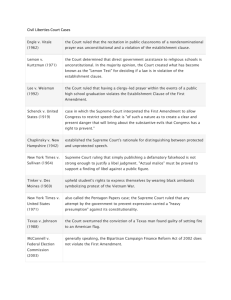US Sup Crt Cases Matching Quiz #1 (2012)
advertisement
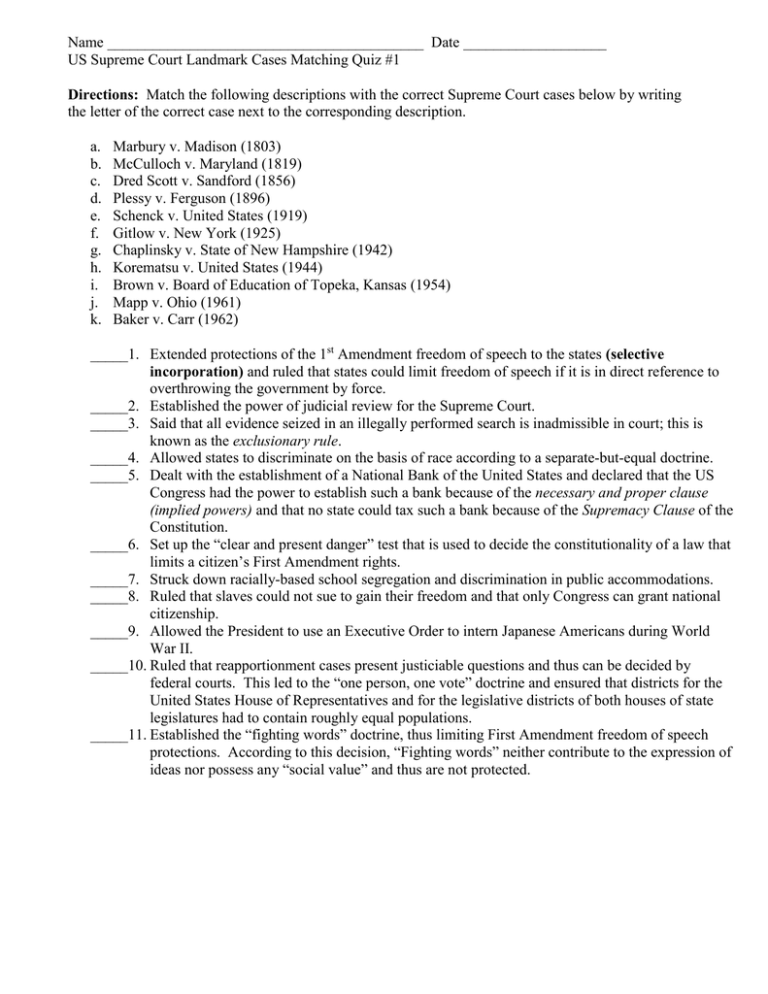
Name __________________________________________ Date ___________________ US Supreme Court Landmark Cases Matching Quiz #1 Directions: Match the following descriptions with the correct Supreme Court cases below by writing the letter of the correct case next to the corresponding description. a. b. c. d. e. f. g. h. i. j. k. Marbury v. Madison (1803) McCulloch v. Maryland (1819) Dred Scott v. Sandford (1856) Plessy v. Ferguson (1896) Schenck v. United States (1919) Gitlow v. New York (1925) Chaplinsky v. State of New Hampshire (1942) Korematsu v. United States (1944) Brown v. Board of Education of Topeka, Kansas (1954) Mapp v. Ohio (1961) Baker v. Carr (1962) _____1. Extended protections of the 1st Amendment freedom of speech to the states (selective incorporation) and ruled that states could limit freedom of speech if it is in direct reference to overthrowing the government by force. _____2. Established the power of judicial review for the Supreme Court. _____3. Said that all evidence seized in an illegally performed search is inadmissible in court; this is known as the exclusionary rule. _____4. Allowed states to discriminate on the basis of race according to a separate-but-equal doctrine. _____5. Dealt with the establishment of a National Bank of the United States and declared that the US Congress had the power to establish such a bank because of the necessary and proper clause (implied powers) and that no state could tax such a bank because of the Supremacy Clause of the Constitution. _____6. Set up the “clear and present danger” test that is used to decide the constitutionality of a law that limits a citizen’s First Amendment rights. _____7. Struck down racially-based school segregation and discrimination in public accommodations. _____8. Ruled that slaves could not sue to gain their freedom and that only Congress can grant national citizenship. _____9. Allowed the President to use an Executive Order to intern Japanese Americans during World War II. _____10. Ruled that reapportionment cases present justiciable questions and thus can be decided by federal courts. This led to the “one person, one vote” doctrine and ensured that districts for the United States House of Representatives and for the legislative districts of both houses of state legislatures had to contain roughly equal populations. _____11. Established the “fighting words” doctrine, thus limiting First Amendment freedom of speech protections. According to this decision, “Fighting words” neither contribute to the expression of ideas nor possess any “social value” and thus are not protected.
